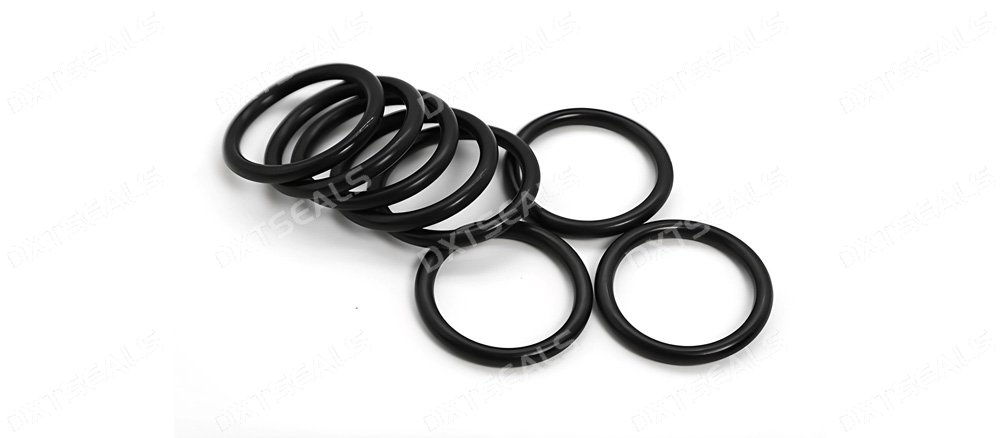Introduction
Rubber O-rings are some of the most widely used sealing components in various industries due to their simplicity, versatility, and cost-effectiveness. These small yet mighty seals provide an essential function in preventing fluid or gas leakage and ensuring the proper functioning of mechanical systems. From automotive engines to aerospace applications, rubber O-rings play a critical role in maintaining system integrity and performance. In this article, we will explore the durability of rubber O-rings and the broad range of applications where they are commonly used.
1. What are Rubber O-Rings?
A rubber O-ring is a circular, ring-shaped sealing component typically made from various types of rubber materials, including Nitrile (NBR), EPDM, Silicone, and Viton. O-rings are designed to fit into a groove and create a tight seal between two mating parts. They are used to prevent the leakage of liquids, gases, or other substances in mechanical systems that require a high degree of sealing.
The basic design of an O-ring allows it to be compressed between two surfaces, ensuring a secure and reliable seal. While they are simple in design, rubber O-rings are incredibly effective at providing a strong, leak-proof seal in a wide range of applications.
2. Durability of Rubber O-Rings
Rubber O-rings are highly valued for their durability, which is influenced by several factors, including the type of rubber used, the environment they are exposed to, and the pressure they must withstand. Here are some factors contributing to the durability of rubber O-rings:
2.1 Material Choice
The material of the O-ring determines its performance characteristics. For example:
- Nitrile (NBR) is commonly used for O-rings exposed to petroleum-based oils and fuels. It offers excellent wear resistance and is suitable for high-pressure applications.
- EPDM is ideal for applications that require resistance to water, steam, and UV exposure, such as in automotive and HVAC systems.
- Viton (FKM) is favored for high-temperature applications and environments that involve aggressive chemicals.
- Silicone O-rings are used in industries where flexibility and high-temperature stability are crucial, such as in food processing and pharmaceuticals.
2.2 Temperature and Pressure Resistance
Rubber O-rings are designed to withstand a variety of environmental factors, including temperature fluctuations and varying levels of pressure. Depending on the material, O-rings can function in temperature ranges from -50°C to 250°C and endure both low and high pressures. In extreme temperature environments, Viton O-rings and Silicone O-rings are often preferred for their high tolerance to heat and cold.
2.3 Chemical Resistance
Different rubber O-rings are engineered to resist specific chemicals. For example, Viton O-rings are highly resistant to aggressive chemicals like acids and fuels, making them ideal for applications in the chemical industry and oil and gas sectors.
3. Key Applications of Rubber O-Rings
3.1 Automotive Industry
Rubber O-rings are used extensively in the automotive sector for sealing a wide variety of components, including engines, fuel systems, and cooling systems. They help prevent fuel leaks, control the flow of coolant, and ensure the efficient functioning of hydraulic systems. Nitrile O-rings are often used in automotive applications due to their durability and resistance to oil and fuel.
3.2 Aerospace Industry
In the aerospace sector, O-rings are critical for sealing fuel lines, hydraulic systems, and engines in both commercial and military aircraft. The high-performance requirements of the aerospace industry necessitate O-rings made from high-temperature and high-pressure resistant materials like Viton and Silicone.
3.3 Manufacturing and Industrial Equipment
O-rings are used in a wide range of industrial applications, including pumps, valves, compressors, and hydraulic machinery. These seals ensure that machinery operates efficiently by preventing the leakage of fluids and gases. EPDM O-rings are often chosen for their resistance to water, steam, and other industrial fluids.
3.4 Medical and Pharmaceutical Applications
In the medical and pharmaceutical industries, rubber O-rings are essential for creating secure seals in equipment such as syringes, vials, and IV connectors. They must meet strict regulatory requirements for biocompatibility and sterility, with Silicone O-rings being a common choice due to their non-toxicity and flexibility.
3.5 Food Processing and Packaging
Rubber O-rings are also used in the food processing and packaging industries to prevent contamination and ensure sanitary conditions. Materials like Silicone and EPDM are preferred in food-grade applications because they meet the standards for FDA compliance and can withstand high temperatures and cleaning processes.
4. Factors to Consider When Choosing Rubber O-Rings
When selecting the appropriate rubber O-ring for your application, several factors need to be considered to ensure optimal performance:
4.1 Size and Fit
The size and dimensions of the O-ring are critical. Ensure the O-ring is the correct size to fit into the groove without being overly compressed or too loose. An improperly sized O-ring may fail to create a reliable seal.
4.2 Material Compatibility
Select the appropriate material based on the operating environment. Consider factors like chemical exposure, temperature ranges, and pressure levels when choosing the material of your O-ring.
4.3 Compression Set Resistance
Compression set refers to the ability of a rubber O-ring to maintain its shape after being compressed over time. Choose materials with high compression set resistance to ensure the O-ring continues to provide an effective seal under varying pressure conditions.
4.4 Regulatory Compliance
For industries like food processing, pharmaceuticals, and medical devices, ensure that the O-rings comply with relevant regulations (e.g., FDA, USP Class VI) to maintain safety and hygiene standards.
Conclusion
Rubber O-rings are indispensable sealing components used across a wide variety of industries, offering durability, reliability, and versatility. The material selection and performance characteristics of rubber O-rings make them ideal for applications ranging from automotive engines to pharmaceutical equipment. Understanding the specific demands of your application will help you choose the right O-ring for optimal sealing performance. With the right choice of material and design, rubber O-rings provide long-lasting protection against leaks, ensuring the smooth operation of mechanical systems.

